Austin 1 & 1.5 ton (LD Range)
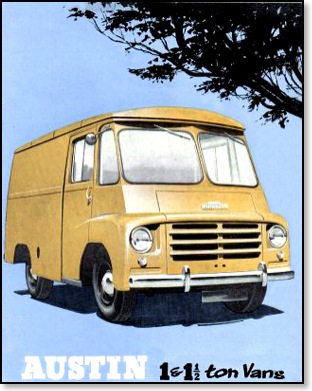
This model which was to replace the K8 25 cwt Three-way van, and was sold under both the Morris and Austin banner. They were produced in Birmingham at Adderley Park which had been part of the Morris empire.
The Austin was badged as the 1ton Van (LD1) and the 1.5ton (LD2) launched in December 1954. The versions were different in three main areas. Rear axles were completely different, along with the steering boxes and also the brakes, with Lockheed on the LD1 and Girling on the LD2
Initially it was only available with a petrol engine of 2.2litre. But at the beginning of 1955 both were available with a 2.2litre diesel engine as an option. The LD2 larger capacity was achieved with a raised roof and a longer body.
The rugged chassis, with four cross-members was designed to accommodate a wide variety of specialised bodies.
It continued for another five years until in April 1960 when the next major update was the introduction of the . The 1ton was now called LD-M20 and the 1½ton LD-30.
Various changes were still been made as it was then called the 240/260LD and 340/350LD where the numerals say 340 was the GVW (Gross Vehicle Weight). When the plating and testing regulations came in the 350LD was uprated to 3.6 tonnes, by increasing the tyre ply rating to carry the extra load. The vehicle was then subject to annual Goods Vehicle testing and Operator Licensing requirements.
In 1967 the LD range was replaced by the EA model.
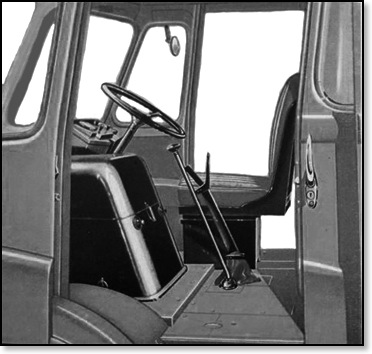
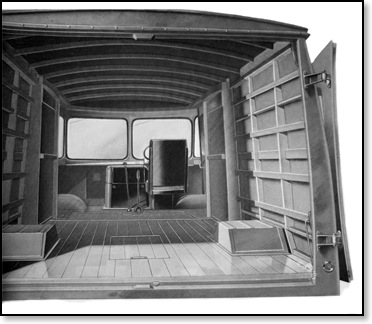
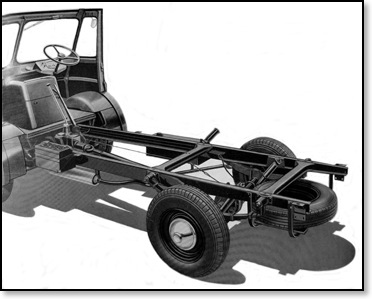
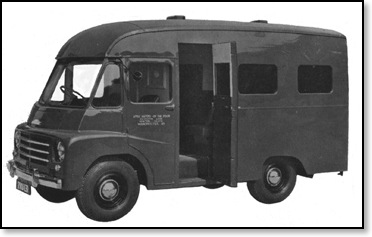
Ambulance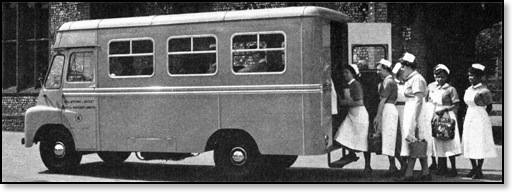
12 seater Coach
Date when launched 1954
Discontinued in 1967
Total produced not known
Engine
Petrol
2,199 cc 46 bhp at 3,250 rpm Max torque 97 lbs/ft at 1,800 rpm
Diesel
2,178 cc 55 bhp at 3,500 rpm Max torque 89 lbs/ft at 2,800 rpm
Main measurements 1 ton
Length 14ft 7.3ins Width 6ft 4ins Height 7ft 5.5ins
Wheelbase 8ft 4.4ins Track front 4ft 10.7ins rear 4ft 8.4ins
Main measurements 1.5 ton
Length 15ft 2.5ins Width 6ft 4ins Height 8ft 1.4ins
Wheelbase 8ft 4.4ins Track front 4ft 10.7ins rear 4ft 10ins
Price Van ex Works In Grey Primer
January 1956
1 ton Petrol £722 incl Purchase Tax
1.5 ton Petrol £ 758 incl Purchase Tax
January 1956
1 ton Diesel £840 incl £118 Purchase Tax
1.5 ton Diesel £877 incl £124 Purchase Tax
June 1959
1 ton Petrol Van £694
1.5 ton Petrol Van £728
1 ton Diesel Van £799
1.5 ton Diesel Van £ 833
Note the reduction in price, this was because Purchase Tax was removed on commercial vehicles in the 1959 Budget
___________________________
London Ambulance Service
Special plastic bodied LD 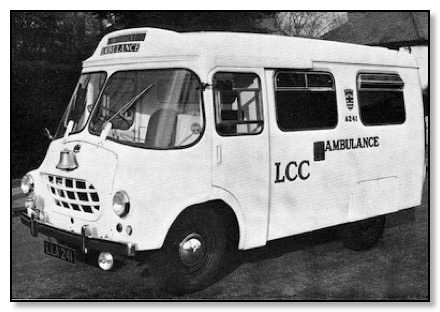
It was in 1956 that the London County Council's Health Committee decided that they needed to change the 220 large ambulances. They were difficult to handle in the traffic and were only doing about 9 mpg, and the ride was poor.
Having looked around for a suitable chassis, it was decided to use a Austin petrol engine LD.2. The chassis would be modified in the following way at their own Wandsworth workshop. Chassis would be lowered to bring the floor level down to 1ft 8ins from the ground. It would be necessary to also improve the ride as it was rather harsh, and the exhaust and intake noise excessive.
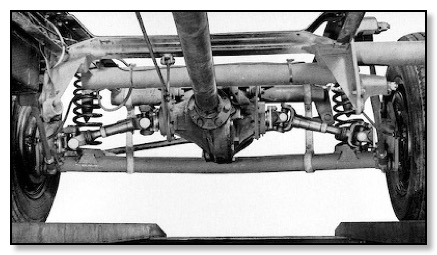
Rear axle assemble
The picture above shows the rear axle assemble that was final decided upon. A tubular cross-members support the LD.2 differential case. The De Dion tube is located by twin radius rods on each side, with a Panhard rod giving lateral location. Aeon auxiliary rubber springs are inside the coil springs, with Woodhead-Monroe shock absorbers completing the assemble. Austin's Design Department were willing to offer advice and also allow changes to be made from standard. At the front the springs were lengthened and the steering brought forward.
A batch of nine MKI were built using a standard steel cab. At the back was a plastic body resting on six rubber mountings carried on outriggers attached to the chassis frame, with the floor made from aluminium chequer plate. Testing of the prototype took place at MIRA, and the design gave a very good ride, with absence of roll on corners and also freedom from fore-and-aft pitching. The standard exhaust silencer was replaced by the larger Princess model version, and intake noise was also reduced by fitting the air cleaner from the taxi. One of the test vehicles was fitted with a experimental all-British Hobbs automatic transmission, which was never fitted in the production versions.
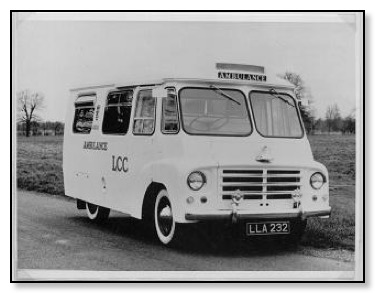
Mark I
From the experience gained from the Mark I batch, it was time to produce the Mark II version. The main difference was that the body would now be completely made from plastic. The various parts were made in separate moulds, cab shell, floor, wheel arches, fascia panel and engine cowl, and were impregnated with slate powder which gave it hard wearing properties and was self colouring, the roof had a translucent centre section.
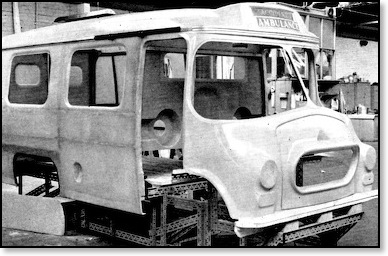
Showing the final completed body
Later version using a 1100 grille MKII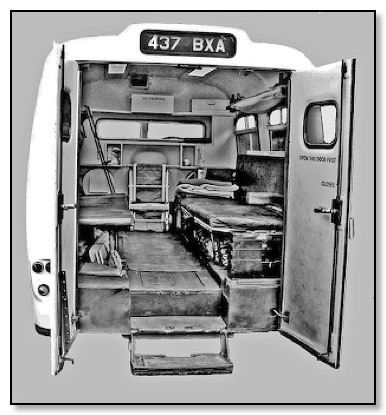
Rear interior 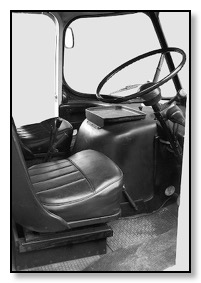
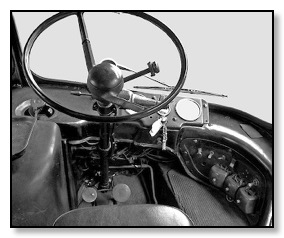
Cab interior
Engine Compartment
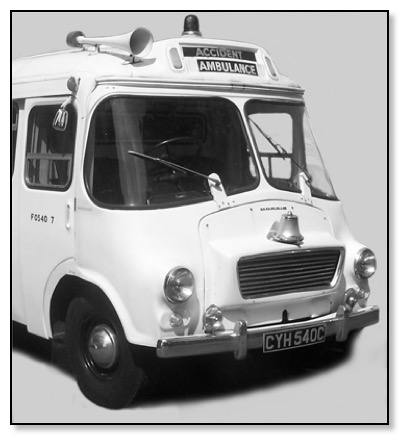
MKIII
For the MKIII version the main change was that the body now incorporated a double skin, which produced a stronger body. The moulding above the cab now allowed a single glass ambulance sign. Indicators are now positioned above the doors which allowed side lights to moved directly under the headlights. The front end now has a cleaner look, with its revised tapered grille and horizontal bars. You will see that a large horn was now installed on the roof, this was because with increased traffic noise the bell could not always be heard. It is interesting that above the bell is now a Morris badge.
Thanks to Steve for some of the information and pictures.
If you were employed at the Wandsworth workshop, or drove one of these vehicles, please get in touch. Contact
It appears that LLA 231 Austin LD MKI ambulance was one of a batch of three sold out of service at Garratt Lane Auctions in 1963/4. They were all painted grey before going to the auction. The others were almost certainly LLA 232 (picture in the article) and probably LLA 233.
LLA 231 was bought for conversion to a mobile greengrocer's shop, which served the Box Hill area of Surrey. It was painted light green, with the blacked out windows replaced by clear glass. Rear doors would be closed when travelling from its base to the area it was working that day, but then would remain open. The vehicle was fitted with chimes similar to Ice Cream vans with this one playing Oranges and Lemons. Internal roof racks were cut down from a scrap Bedford OB coach and fitted to give extra carrying space. With all this extra weight the roof was beginning to sag where the racks were fitted, so only light goods could be put there.
Information supplied by Tony Marshall.
_______________
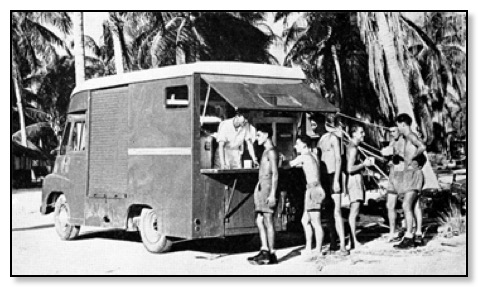
LD2 NAFFI in the Christmas Island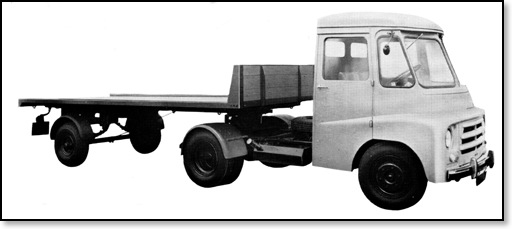
LD Prime Mover

